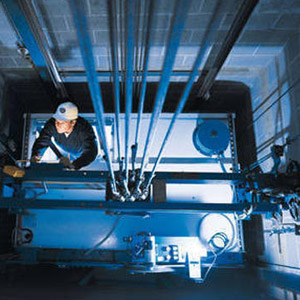Your elevator is 20, 25, 30+ years old. You are asking yourself, is it time to modernize my Elevator? First, let’s define what an elevator modernization is, then we will dive into if your elevator needs a modernization, and how to set out on that process.
What does modernizing an elevator mean?
When your elevator company tells you to get a door modernization or upgrade parts, is this an elevator modernization? Typically, modernizing an elevator means upgrading the controller.
What’s included in the elevator modernization
Along with the controller, most times most parts of the elevator are upgraded including but not limited to:
- Most door components including the door operator
- For hydraulic elevators the tank unit inclusive of the power unit
- The ropes
- Sometimes the machines
- The control operating panel and all buttons, bezels etc.
What’s not included in the modernization
All elevator modernization agreements are different, but typically the following elevator components are not included unless specifically included:
- Elevator cab walls and interiors
- The machines (sometimes included in modernization contracts)
- Gears within the machines
- Some door components (door clutches, interlocks etc.)
How do I know if I should consider modernizing my elevator?
Some good questions to ask yourself if your elevator is ready for modernization are:
Are service calls increasing?
Is my elevator at least 20 – 25 years old?
Have there been any safety issues for your tenants?
Has there been extended downtime for repairs?
Is your elevator maintenance company billing you for obsolete parts?
If you are answering yes to these questions it may be time to start considering it.
Don’t jump the gun on your elevator modernization
Just because your elevator is older, down for repairs and has obsolete parts does not necessarily means it is time for an elevator modernization. First, just because your elevator is old, does not mean it’s useful life is over. For example, a car built in 1985 may be old, but how many miles has it been driven? The same logic applies for elevators.
But what if, like a 1985 car they no longer make parts of my elevator? For most elevators that are relay based (typically pre-1990), relays can be purchased from many third party vendors. Ironically, elevators used to be built to last 50 – 100 years. In the past 30 years elevator companies have been designing elevators to last 20 – 30 years on average. If you are comfortable having an older elevator that may not look pretty but functions, you likely don’t have to modernize your elevator. You should look at your maintenance contract and ensure your elevator company is holding up their end of the deal.
Where you start to run into trouble is early microprocessor based elevators (early 1990’s and later). Often times, these microprocessors are no longer manufactured. If one burns out you can be out of luck because your elevator maintenance company must have the microprocessors fixed instead of replacing them with like for like parts. Not only will your elevator be down for an extended period of time, but also your elevator maintenance company can bill you for this repair.
Be prepared before this happens
Proactively, have your elevator company inform you of any microproccessors that are obsolete, and have them search for an extra. This will be an additional charge (you should only pay for parts not labor), but this will prevent extended downtime. When one microprocessor goes you will have a backup while the other microprocessor gets repaired.
However, this can be a tedious process, and it may be easier to modernize your elevator.
Where do I start my elevator modernization
Traction elevators vs. Hydraulic elevators
If you own a building with one hydraulic elevator versus a building with twelve traction elevators, the conversation on where to start will be much different.
If you have 1 – 2 hydraulic elevators, I recommend starting with your existing elevator company and bidding them out to keep them honest. Margin for modernizations are significantly less than elevator upgrades, so you should get a decent price. Send the proposal you receive from your maintenance company (but hide the price) to a couple of their competitors and ask for an apples to apples comparison. Don’t forget that as you modernize your elevator you may have additional work on your building to bring it up to code.
Should you get a consultant involved? You can and I will discuss elevator consultants in a modernization in a moment. However, consultants can charge $10,000 + for designing a specification, and additional money for their time. This may not be cost beneficial for only modernizing one or two hydraulic elevators.
If you have traction elevators, modernizations will be more expensive, and more complicated. For these types of modernizations I would recommend an elevator consultant. A consultant will be an additional expense, and many times they won’t save you money upfront from negotiating, as elevator modernizations are low margin. However, they will save you a significant amount of time, headaches and ultimately money down the road. When modernizing traction elevators, there are many more factors to consider. Do you need to re-do the machines? How will tenants get the 20th floor during the modernization? All of this can be solved with a solid specification from the consultant and their ability to work with the elevator company and ensure they are following their specification in a timely and appropriate manner.
How much is this going to cost me?
A very general rule of thumb are hydraulic elevators are $75,000 and traction elevators are $150,000 – $200,000. Keep in mind this a very generic estimate, and does not include building work to become ADA compliant.
If you are interested in chatting to see if you should explore a modernization, or if you need a referral to elevator consultants, drop me a line.


